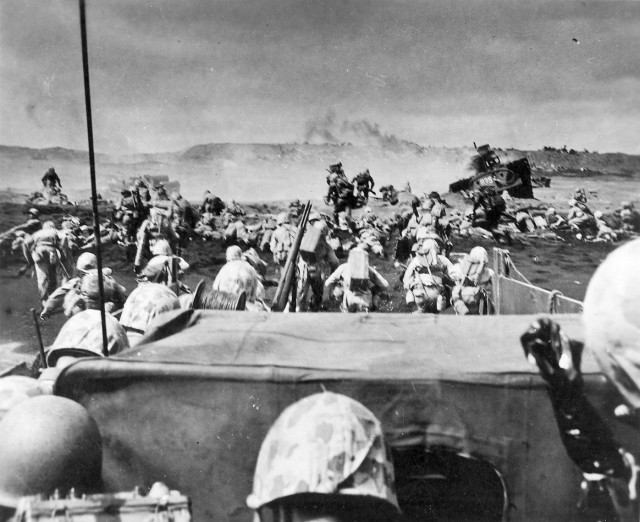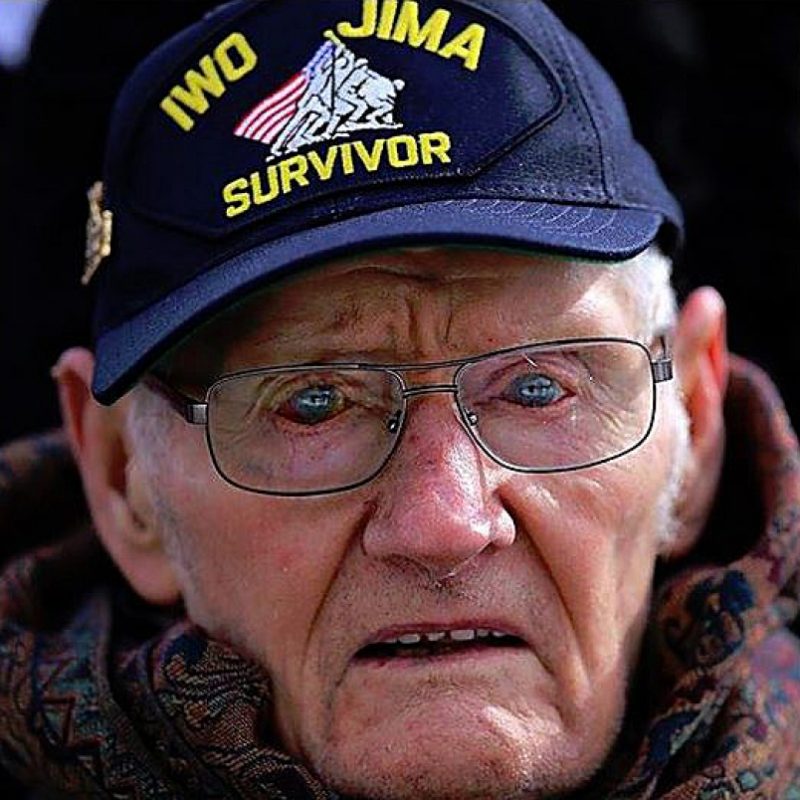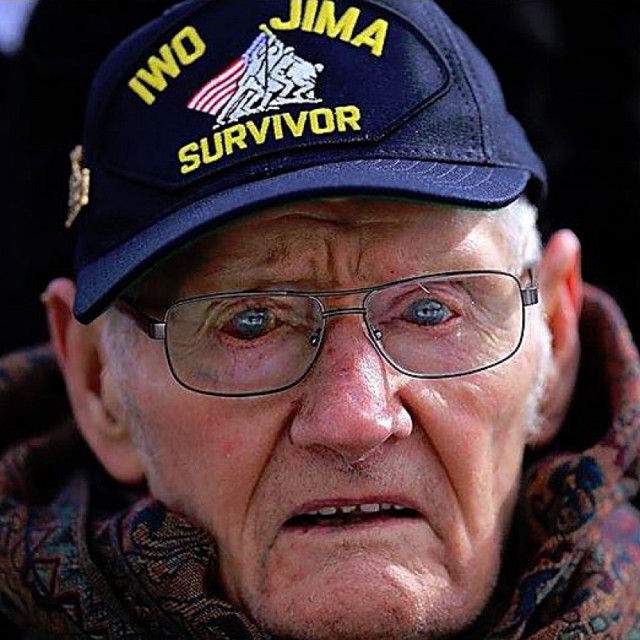One of the most famous battles of World War Two is the battle for the Pacific island of Iwo Jima. As the US Army advanced towards Japan in 1945 there were two island obstacles in their way – Okinawa and Iwo Jima. These two island were vital for the US forces to conquer so that they could establish aircraft bases and prepare for the assault on Japan’s mainland.
Iwo Jima was only 660 miles from Tokyo, thus from there the US would be able to conduct shorter bombing raids on the capital. Initially the island was also slated to be a staging area for a planned land invasion, but this strategy was eventually cancelled in favour of dropping the atomic bombs on Hiroshima and Nagasaki.
The US Navy began the Iwo Jima attack by gathering almost 900 ships off the coast and bombing the island for weeks from the ships and from the air. In mid-February troops were shipped to the island on an expected ten-day mission to take hold of the island. In the end it took more than three times that long; the 36-day battle was one of the bloodiest and most violent battles of the war.

The Japanese did not meet the US troops head-on on the beaches; instead they hid throughout the island in tunnels, caves and dense woodland, from where they caused heavy casualties. The Japanese were well known to favor dying over surrendering, so US troops knew that if the Japanese soldiers were there to fight to the death. They had to get up close in order to kill the Japanese in their hiding places.
By 23rd February, US troops put up an American flag on Mount Suribachi, in the middle of Iwo Jima island. The fighting continued but the flag was a big morale booster for the US troops, and the next day they took the airfield. By 26th March the US had completely occupied the island, with only small pockets of Japanese soldiers still resisting.
It is estimated that nearly 20,000 Japanese soldiers lost their lives, with around 1000 surrendering and surviving. Exhausted and battered, the Americans finally claimed the Island. Records suggest that around 70,000 US Marines were dispatched to fight on Iwo Jima, and almost 7,000 of those were killed, with 19,000 injured, The Washington Times reports.
This year a group of Iwo Jima veterans who are all in their 80s and 90s are returning to the island for a commemoration service. One of them, Hershel Williams, is returning even though initially he did not want to go back. His grandchildren convinced him it would be a fitting memorial for his sacrifice and the sacrifice of all the soldiers who fought there.
Around forty-five veterans of the battle will return this year to attend the ceremony at the foot of Mount Suribachi. There will be no Japanese veterans or officials involved in the commemoration.

